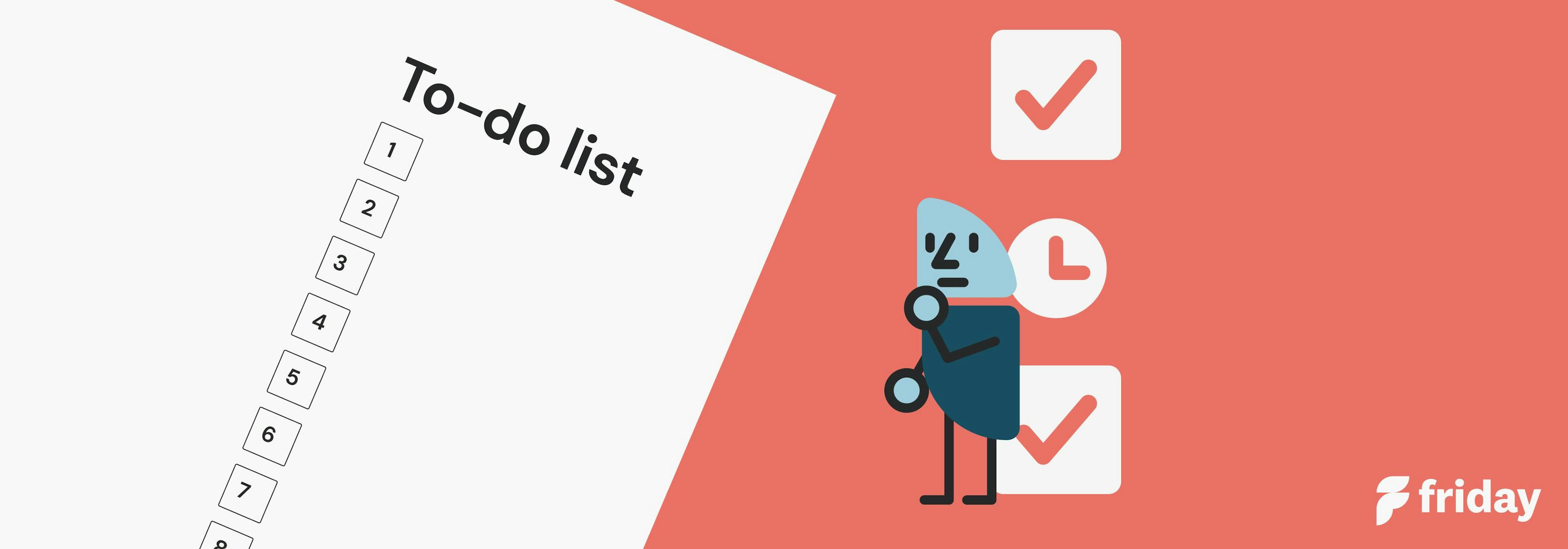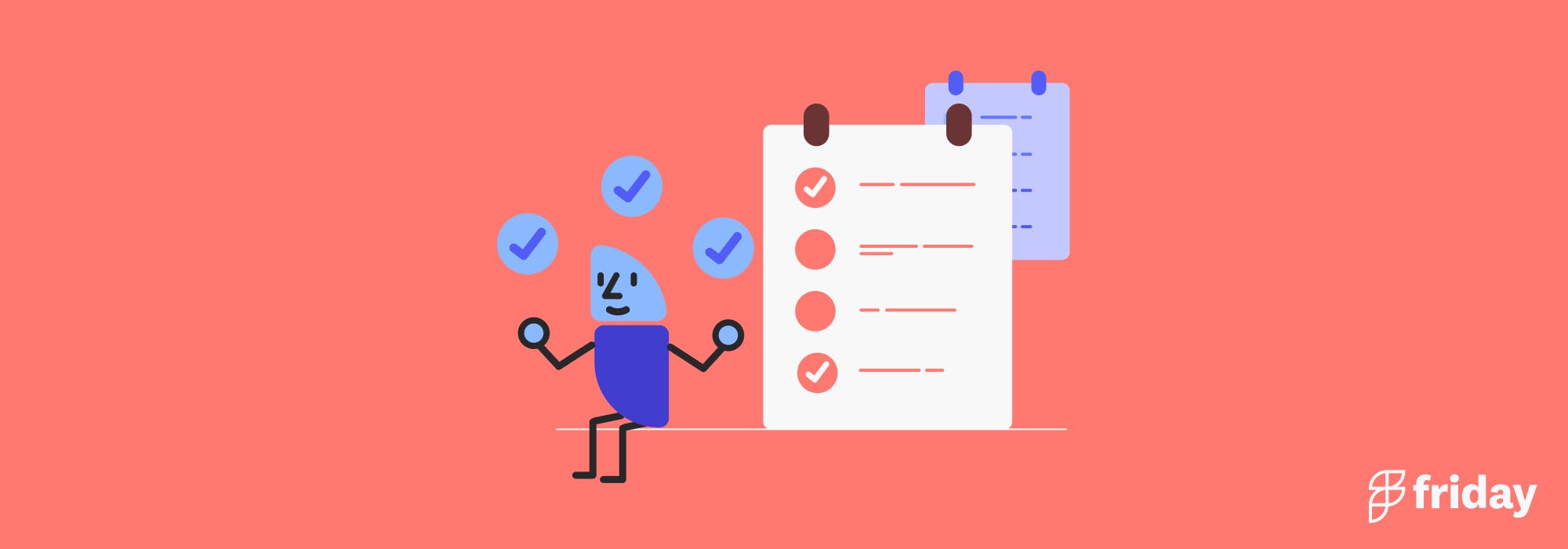How Do You Solve To-Do List Anxiety? How To Overcome It & Get Things Done

In a world of constant stimulus, being serious about to-do lists helps you stay in control and on course. Amidst the constant fluctuations of modern life, a few bullet points can be the difference between easy and difficult times.
Get the mix just right, to-do lists are unmatched for organizing your life and reducing stress. Although, they can suddenly become the cause of your anxiety if you’re overly-ambitious or ill-prepared.
Implementing healthier working practices is easier than you’d think, and should be number one on everyone’s agenda!
The Power of To-Do Lists
To-do lists are merely a physical manifestation of our deep psychological need to plan, an absolute precondition for productivity and goal-achievement.
One 2020 study showed students who regularly wrote down desired goals (of any type) and enacted a plan ended up with better academic results.
The results would suggest that successful people have a greater tendency for planning, or that planning makes us more successful. Either way, the research tells us we should be whipping up a to-do list daily.
The older research of Masicampo & Baumeister indicates that to-do lists have positive influence on goal pursuit as “a plan eliminates the need for further involvement from thoughts and attention.”
That means your to-do list goes a long way towards automating your actions, which reduces the likelihood of getting distracted or procrastinating.
Therefore, the current scientific understanding is that to-do lists are cognitively efficient, having a direct influence on likelihood of attaining objectives.
On the contrary, many find their to-do lists simply don’t work, or they are the cause of stress and anxiety.
Why Do To-Do Lists Give Us Anxiety?
For the same reasons that to-do lists are motivating, they can just as easily become overwhelming – the “too much of a good thing” proviso. At first glance, a long list of tasks is evidence of a determined go-getter, but being too unrealistic with your estimates can quickly stress you out.
Feelings of disappointment after failing to complete all tasks, or the endless guilt of not being productive enough, can discourage you from making future to-do lists.
So, here’s three reasons why your to-do lists might be making you mad:
1. You’re being too ambitious
If your lists are causing a lot of grief, it’s most likely you’ve got too many tasks or you’ve underestimated the time you’ll need to complete them. You’ll start to feel heavy if your list runs too long. Faced with a barrage of unfinished business, stress levels will rise.
Research decades ago showed that our motivation affects our ability to reason, meaning we often set ourselves targets that are actually less attainable than we perceive. When drafting up to-do list, this shows itself as our assumption that we can get 100 things done.
As well as planning too many tasks, we are typically overly-optimistic about the time we need to finish tasks. It’s an inclination known as planning fallacy.
You might end up with a half-finished to-do list because you didn’t allow enough time for each task. In such a case, the culprit is poor planning, not poor performance, often meaning we beat ourselves up for no reason.
The Solution:
You don’t need more than 4 or 5 substantial jobs for a daily to-do list, with a few smaller tasks between in you can handle it. Suggestions vary between productivity systems: for example, the Ivy Lee method dictates a set of 6 items per day, whereas David Allen’s coveted Getting Things Done (GTD) method has no strict limit, recommending that you complete small tasks immediately, as they crop up.
Remember to review how long your goals actually take to accomplish, as it can inform future task-lists.
Plenty of research has shown the indisputable advantage of regular self-assessment; in this case, it will likely make you more skillful at equating productivity in terms of the resources available. With a more accurate, achievable to-do list, there’s much less anxiety about falling short.
2. You’re being too self-critical
An ‘all or nothing’ approach is a dangerous attitude towards to-do lists. Having unfinished tasks at the end of the day, week or month is not nearly as terrible as we make it out to be. A crucial component of effective working practice is the migration of incomplete tasks to future task-lists; it’s a common occurrence in work journals, be it a weekly or monthly spread.
We can easily get obsessed with checking off every item on our list, especially when our brains release feel-good endorphins, namely dopamine, after you mark a beefy task as complete. Despite this cerebral self-encouragement, having some jobs left at the end of the day is perfectly fine.
Self-criticism is proof that we are both conscious of our behaviours and desiring of personal development. Yet, in the perpetual pursuit of productivity, it’s easy to be swept up into unhealthy habits or unsustainable work models. It’s important to be positive, regardless of how much of the list you’ve completed.
The Solution:
Don’t worry about how much is left on your list, lest you get overwhelmed by how much remains. You are far more likely to be successful if you simply focus on the next step. Prioritizing your to-do list is a great way to make sure you get the most important things done first.
By guaranteeing that you get the most important or urgent tasks done first, you have reason to celebrate, even if you miss some smaller stuff. Follow the principle of eating the frog and you make sure to begin each morning by tackling the most intimidating task, a quick way to boost self-confidence and manage anxiety.
The constant pressure of a to-do list can motivate us to get to work, but it needs to be balanced with the pleasure of achievement.
Savor the feel-good effect of checking off tasks. Reward yourself for any progress made, whether it’s a well-deserved break or a fancy lunch. Every time you fulfil a smaller goal, you move a step closer to your larger, overall dreams - don’t let yourself forget it!
Don’t have a technique for prioritizing yet? Try the Eisenhower Matrix!
3. You’re experiencing the Zeigarnik Effect
As many accounts go, the Lithuanian psychologist Bluma Zeigarnik famously observed that waiters show remarkable talent for remembering lengthy orders, yet once the bill is paid and the guests have departed, they instantly forget it all. After subsequent research, Zeigarnik found that our minds don’t appreciate having too much work left unfinished.
This phenomenon, the Zeigarnik Effect, suggests that our subconscious doesn’t delete tasks, but suspends them. In order to keep us aware of incomplete items, our inner voice repeatedly nags us – “shouldn’t you be doing this? Did you finish that?” It’s therefore believed that we must keep a sort of ledger in our head, which one would assume requires a level of mental exertion to maintain.
Our brain doesn’t rest until we cross out these in-progress jobs, which can cause significant anxiety when left unchecked. When you’re really stressed out, this effect can manifest as immense guilt. Poorly assembled to-do lists won’t satisfy this subconscious hunger.
The Solution:
Whenever you experience the Zeigarnik Effect, with regard to tasks and responsibilities, be sure to note down those thoughts immediately. You don’t have to add impulsive tasks to your current to-do list, but you should capture them for tomorrow’s agenda.
Not everything your inner voice nags you about is equally important, or even useful. Keep your primary task-list clear of items that are not essential by being stringent when considering what constitutes a worthwhile aim.
You are free to keep multiple to-do lists, whereby things you’d like to do that aren’t particularly pressing still get recorded in a someday section, like a future log. Writing tasks down communicates to your subconscious that you’re on top of it all, freeing up a little mental space.
If determining goals is a skill that doesn’t come naturally, check out our goal-setting guide.
How To Make a Healthy To-do List
According to a 2008 survey, roughly 73% of US participants said they use to-do lists as a stress-management tool, and feel a calming effect from doing so. Thus it follows that if your current to-do list is weighing you down, it’s time to rethink the entire process.
The first step is to recognise what an effective to-do list looks like and how they’re best used. Task-lists come in all shapes and sizes, largely dependent on individual taste. Regardless of your current productivity practices and preferences, every to-do list needs to satisfy three fundamental elements:
1. Your Tasks
2. Priority System
3. Progress Check
Leaving out any one of these three is a quick route to catastrophe. The reason for much to-do list anxiety is an ineffective prioritization system or inadequate progress checking, meaning people waste their time on invaluable tasks or don’t make changes to improve mistakes and inefficiencies.
We won’t go into full detail here, seeing as you can pop over to our article on how to make a to-do list, but you’ve got the basic gist.
What Are The Benefits of a To-Do List?
Even the fastest scribbles can have a giant impact. A study from Dominican University, California found that participants with written goals, regardless of precise format, were around 50% more likely to achieve their targets than those with unwritten goals.
A separate 2020 study corroborated these findings. “Although individuals who create to-do lists more often tend to procrastinate less,” Dr Timothy A. Pychyl explains, “those who created formal to-do lists procrastinated less than any other group.” The way you approach your to-do list, then, may be equally key for goal-acquisition as the decision to write the list itself.
It seems you get what you pay for: rely too much on mental lists and the Zeigarnik Effect, you forget as much as you recall. Scribbling on a napkin is better than nothing, and might nudge you a tad closer to finishing your tasks. Yet, time and time again the research shows that the uber-productive prefer set structure for consistent performance, whether that’s a paper journal, digital planner or specialist software.
Extra Tips for Reducing Stress & Anxiety
It’s incredibly important to find a method of task-listing that suits you, as you won’t stick to anything you don’t like or believe in. At the same time, be open to the fact that causes of stress or anxiety at work are varied and multifaceted.
- The journey towards healthier working practices is not always straightforward, but here are some extra to-do list for managing to-do list anxiety.
- It is important to keep a to-do list short, only 4 or 5 substantial assignments, or else it can quickly get away from you
- Targets should be realistic and manageable, which goes for both the number and nature of your goals. Repeatedly disappointing yourself with overly-ambitious lists will only make you more anxious
- When prioritizing tasks, rigorously assess each item’s value. Your focus should be on the most important items for the day that work towards larger goals
- Once you’ve accumulated your tasks as a list, only focus on the next step, what David Allen refers to as the “Next Item” in his GTD method. This way, you don’t become unnecessarily overwhelmed by remaining tasks
- At the end of the day, take time to cultivate a sense of accomplishment. This doesn’t simply aid in reducing stress, but also builds self-efficacy and reaffirms the value of your to-do list
- It’s useful to set how much time you want to spend on each task, with a system like time-blocking. If you’re regularly using up more time than anticipated, take it into consideration when you’re setting up your work for the day.
How Friday Helps With Your To-Do List
Need a central place for all your tasks and to-do's?
Lower your to-do list anxiety with Friday and get the most out of your workday.
With the free online to-do list you can sync your calendar and your task list alongside your daily meetings. You’ll have clarity on what you need to accomplish next.

- See your daily schedule next to your to-do list.
- Add your Google or Outlook Calendar
- Pull your tasks from tools you already use, like Asana, Trello, and Todoist.
- Focus and finish.
Final Thoughts on To-do Lists and Anxiety
Stress-free productivity is hard to come by. Wherever you look, there seems to be a fanatical fixation on superhuman output. This skewed representation of how productive one should aim to be, in both personal and professional contexts, is the cause of much anxiety.
Wild stories of industry titans and business gurus are often exaggerated, plus there’s rarely any benefit to directly comparing oneself with such examples. However, there is a general distinction between success and disaster… planning. Thankfully, the mental jump from calmly competent to totally frazzled becomes a lot wider with a little preparation, the humble to-do list your best friend in the gritty grind towards success.


